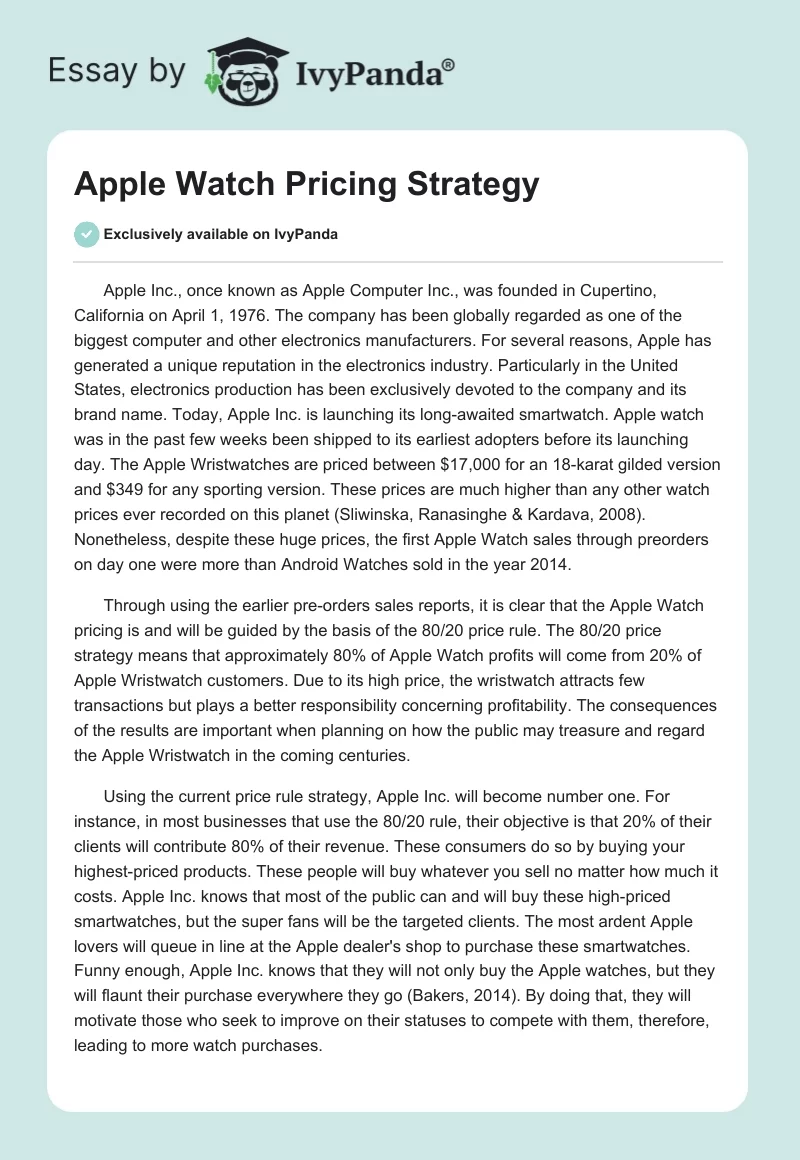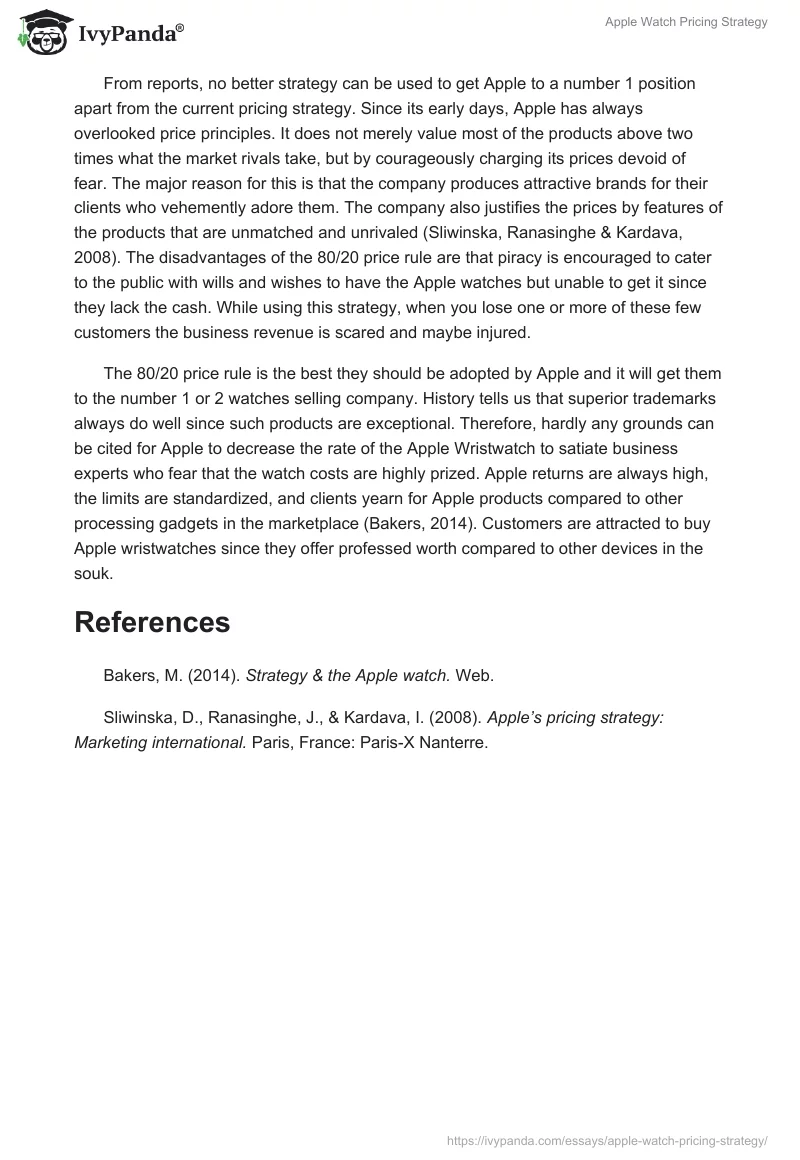Apple Inc., once known as Apple Computer Inc., was founded in Cupertino, California on April 1, 1976. The company has been globally regarded as one of the biggest computer and other electronics manufacturers. For several reasons, Apple has generated a unique reputation in the electronics industry. Particularly in the United States, electronics production has been exclusively devoted to the company and its brand name. Today, Apple Inc. is launching its long-awaited smartwatch. Apple watch was in the past few weeks been shipped to its earliest adopters before its launching day. The Apple Wristwatches are priced between $17,000 for an 18-karat gilded version and $349 for any sporting version. These prices are much higher than any other watch prices ever recorded on this planet (Sliwinska, Ranasinghe & Kardava, 2008). Nonetheless, despite these huge prices, the first Apple Watch sales through preorders on day one were more than Android Watches sold in the year 2014.
Through using the earlier pre-orders sales reports, it is clear that the Apple Watch pricing is and will be guided by the basis of the 80/20 price rule. The 80/20 price strategy means that approximately 80% of Apple Watch profits will come from 20% of Apple Wristwatch customers. Due to its high price, the wristwatch attracts few transactions but plays a better responsibility concerning profitability. The consequences of the results are important when planning on how the public may treasure and regard the Apple Wristwatch in the coming centuries.
Using the current price rule strategy, Apple Inc. will become number one. For instance, in most businesses that use the 80/20 rule, their objective is that 20% of their clients will contribute 80% of their revenue. These consumers do so by buying your highest-priced products. These people will buy whatever you sell no matter how much it costs. Apple Inc. knows that most of the public can and will buy these high-priced smartwatches, but the super fans will be the targeted clients. The most ardent Apple lovers will queue in line at the Apple dealer’s shop to purchase these smartwatches. Funny enough, Apple Inc. knows that they will not only buy the Apple watches, but they will flaunt their purchase everywhere they go (Bakers, 2014). By doing that, they will motivate those who seek to improve on their statuses to compete with them, therefore, leading to more watch purchases.
From reports, no better strategy can be used to get Apple to a number 1 position apart from the current pricing strategy. Since its early days, Apple has always overlooked price principles. It does not merely value most of the products above two times what the market rivals take, but by courageously charging its prices devoid of fear. The major reason for this is that the company produces attractive brands for their clients who vehemently adore them. The company also justifies the prices by features of the products that are unmatched and unrivaled (Sliwinska, Ranasinghe & Kardava, 2008). The disadvantages of the 80/20 price rule are that piracy is encouraged to cater to the public with wills and wishes to have the Apple watches but unable to get it since they lack the cash. While using this strategy, when you lose one or more of these few customers the business revenue is scared and maybe injured.
The 80/20 price rule is the best they should be adopted by Apple and it will get them to the number 1 or 2 watches selling company. History tells us that superior trademarks always do well since such products are exceptional. Therefore, hardly any grounds can be cited for Apple to decrease the rate of the Apple Wristwatch to satiate business experts who fear that the watch costs are highly prized. Apple returns are always high, the limits are standardized, and clients yearn for Apple products compared to other processing gadgets in the marketplace (Bakers, 2014). Customers are attracted to buy Apple wristwatches since they offer professed worth compared to other devices in the souk.
References
Bakers, M. (2014). Strategy & the Apple watch. Web.
Sliwinska, D., Ranasinghe, J., & Kardava, I. (2008). Apple’s pricing strategy: Marketing international. Paris, France: Paris-X Nanterre.


